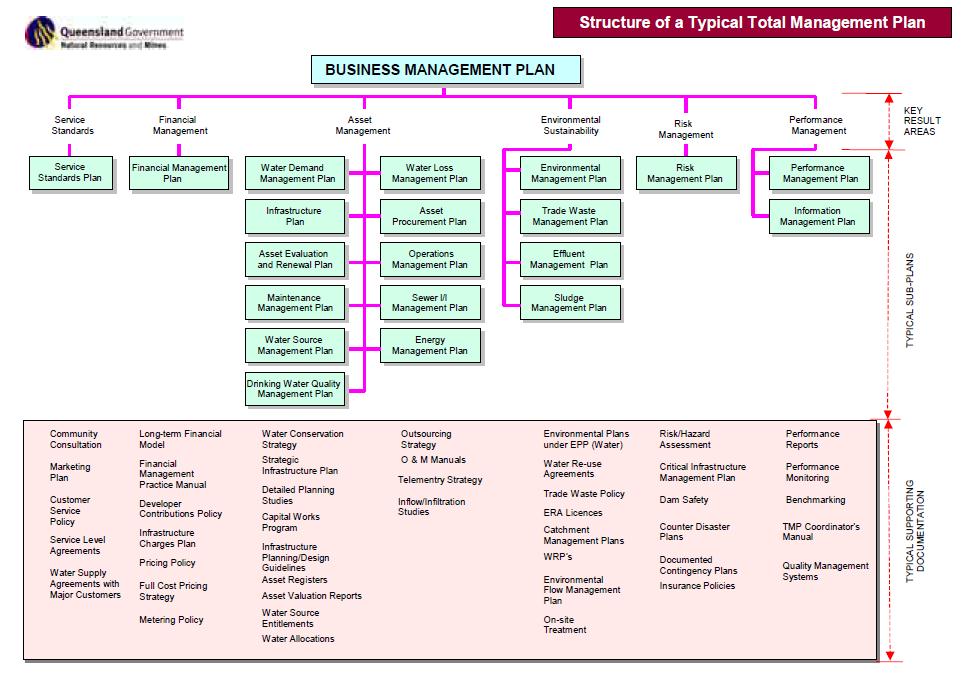Total Management Plans (TMPs) were introduced in 1994 with the aim of promoting "best practice planning and least cost outcomes for water supply and sewerage planning". A TMP "quantifies and assesses the condition of assets, prioritises expenditure, and identifies options for cost saving and improvement in ways that are ecologically and financially sustainable.”
TMPs were once required before State subsidy funding would be approved, but this financial incentive ceased in 2009 with the removal of water subsidies. Some service providers still see TMPs as a useful document as they provide an overview of the majority of key elements of a water business and overlap with many other regulatory requirements.
Continuation of Total Management Planning is useful when it is properly integrated into the overarching business planning framework of a Service Provider. That is, a TMP that is created in a way that is useful for the service provider is a relevant document regardless of the incentive of subsidy availability.
Summary Facts
| Mandatory | No |
| Relevant Period | 1994 - 2014 |
| Exemptions | N/A |
| Penalty Provisions | No |
| Penalty Units | N/A |
| Approved | Reviewed |
| Reporting | N/A |
TMP Coverage
The TMP Guidelines provided by DERM (Development Guide Chapter) suggested the following content for TMPs:
| Foreword | |
| Introduction |
|
| Mission and Vision |
|
| Customers |
|
| Business |
|
| Expectations of key stakeholders |
|
| Schemes |
|
| Assets |
|
| Issues facing the business |
|
| Key management strategies |
Summary strategic framework in tabular format which includes:
|
| Service delivery strategy |
|
| Implementation of total management plan |
|
| Appendices |
|
Suggested sub-plans (modified from TMP Guidelines Development Chapter)
| Service Standards Plan | |
| Financial Management Plan |
|
| Asset Management Plans |
|
| Environmental Sustainability Plan |
|
| Risk Management Plan | |
| Performance Management Plans |
|
| Human Resources Management Plan |
Suggested structure for TMPs (from TMP Guidelines Development Chapter)

Interaction with Other Plans and Regulatory Requirements
The contents of a Strategic Asset Management Plan (SAMP) overlapped broadly with sections of Total Management Plans but were more specific and (mandatory) guidance was provided for the creation of SAMPs. The DERM SAMP Guidelines stated that if all requirements are met (p. 2) a TMP could be submitted to the regulator as part or wholly meeting the SAMP requirements
Relevant Documents
No items found.